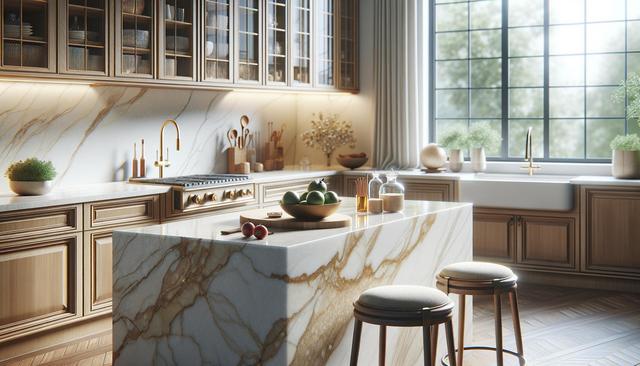
Exploring Quartz Countertop Patterns and Edge Styles
Understanding Quartz Countertop Patterns
Quartz countertops come in a variety of patterns that mimic both natural and engineered looks. These patterns are created during the manufacturing process by combining ground quartz with resins and pigments. This allows for more consistency compared to natural stone, while still offering a wide range of visual styles. Some quartz patterns resemble marble or granite, while others are more uniform and modern in appearance. Homeowners can choose from bold veining to subtle specks, depending on the desired aesthetic.
Popular quartz pattern categories include:
- Marble-look: Soft veining in white or gray tones
- Granite-look: More pronounced patterns with varied colors
- Solid colors: Minimalist and contemporary
- Concrete-look: Industrial style with subtle texture
When selecting a pattern, it’s important to consider how it will interact with other elements in the room, such as cabinets, flooring, and backsplash. Lighter quartz patterns can help brighten smaller spaces, while darker options can add elegance and depth to a larger kitchen or bathroom.
Choosing the Right Edge Style
Edge styles are not just a finishing touch—they play a significant role in the overall look and feel of your countertop. From classic to contemporary, the edge profile can influence both aesthetics and functionality. Some edge styles enhance traditional design themes, while others complement sleek, modern interiors.
Common quartz countertop edge styles include:
- Straight edge: Simple and clean, suitable for modern spaces
- Beveled edge: Angled cut that adds subtle dimension
- Ogee edge: Elegant and traditional, great for formal kitchens
- Bullnose edge: Fully rounded for a soft and safe profile
- Half bullnose: Rounded on the top, flat on the bottom
Edge styles can also impact maintenance and cleaning. For example, intricate profiles like ogee may collect more dust or crumbs, whereas straight and bullnose edges are easier to wipe down. It’s worth considering how much upkeep you’re willing to commit to when choosing an edge style.
Coordinating Patterns and Edges with Interior Design
To create a cohesive look, it’s essential to coordinate your quartz pattern and edge style with the overall design of your space. A modern kitchen might benefit from a subtle concrete-look quartz with a straight edge, while a traditional setting could pair a marble-look surface with an ogee edge. The goal is to blend the countertop into the design theme rather than have it compete with other elements.
When planning your design, take into account:
- Cabinet color and style
- Lighting—natural and artificial
- Backsplash material and pattern
- Flooring texture and tone
Having samples of these elements on hand when selecting your quartz can help ensure everything works well together. Some manufacturers even offer design simulation tools to visualize combinations before making a final decision.
Durability and Maintenance Considerations
Quartz is known for its durability, being resistant to scratches, stains, and heat. However, the pattern and edge you choose can also influence how well the countertop ages over time. For example, darker patterns may show fewer stains but can highlight dust or fingerprints. Similarly, edge styles with sharp angles might be more prone to chipping in high-traffic areas.
To maintain your quartz countertop:
- Use a soft cloth and mild soap for daily cleaning
- Avoid abrasive scrubbers that can damage the resin surface
- Use trivets for hot pots and pans
- Wipe spills promptly to prevent staining
With proper care, quartz countertops can maintain their appearance and functionality for many years, making them a solid long-term investment.
Installation and Customization Options
Quartz countertops are typically installed by professionals due to the precision required in cutting and fitting. Most fabricators offer customization options, including pattern orientation, edge profiles, and cutouts for sinks or cooktops. It’s essential to work closely with your installer to ensure measurements and details are accurate.
Customization options may include:
- Waterfall edges for a dramatic look
- Integrated backsplashes
- Custom sink cutouts
- Bookmatched patterns for a seamless appearance
Discuss your vision and functionality needs early in the process to avoid costly changes later. Whether you’re remodeling an existing space or building new, a well-planned quartz countertop can enhance both form and function in your home.
Conclusion: Making Informed Choices for Lasting Style
Quartz countertops offer a wide range of patterns and edge styles to suit nearly any design preference. By understanding your options and how they interact with your interior style, you can create a cohesive and visually appealing space. Consider practical factors like maintenance and durability alongside aesthetics to make a choice that works for your lifestyle. With thoughtful planning and professional installation, your quartz countertop can be a lasting feature that adds both beauty and value to your home.


